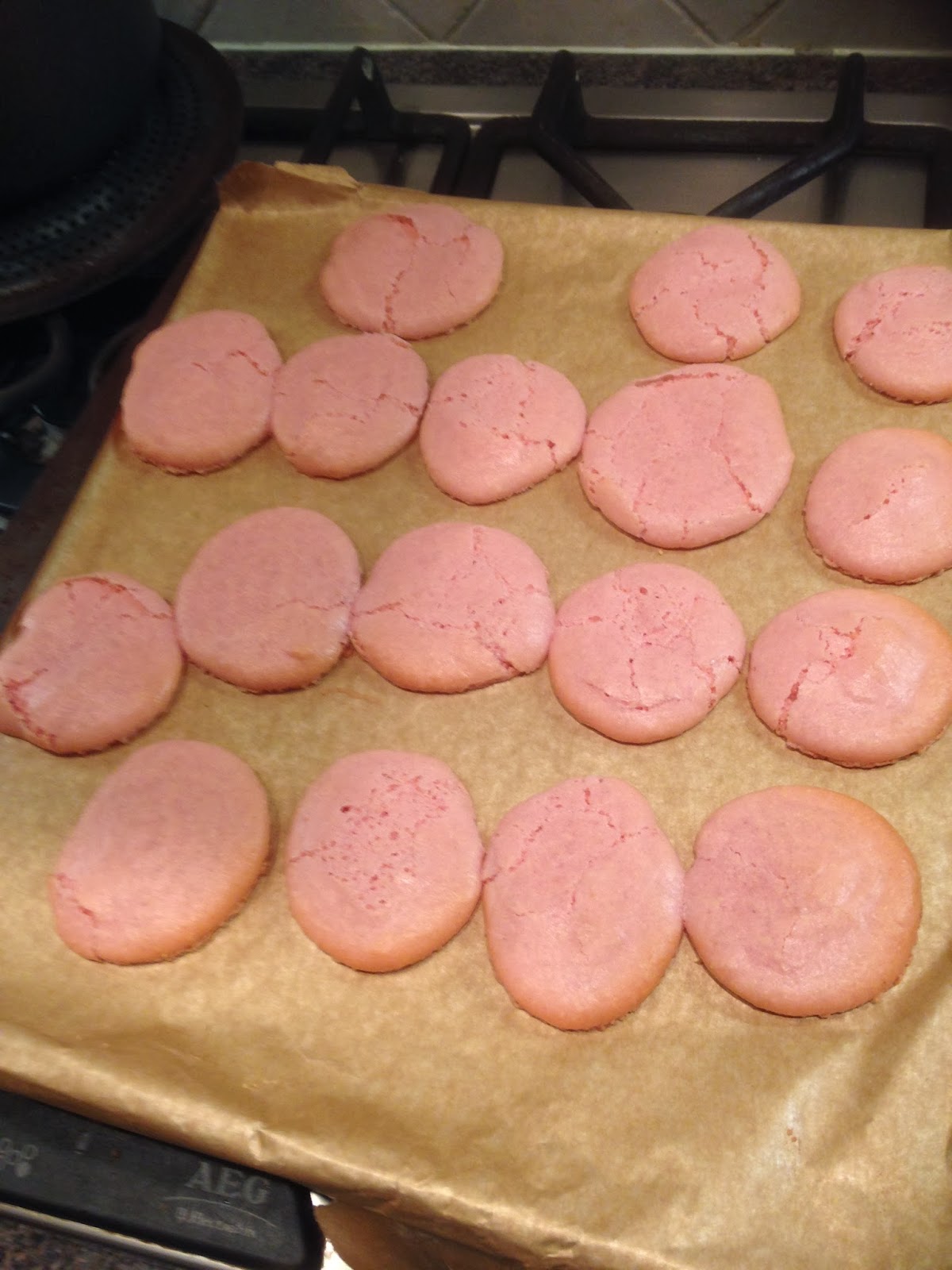It is not often that we think of macaroons as anything more
than delicate, small and sweet treats. It is even less likely that the
connection between the two shells consisting largely of ground almonds sandwiched
between a flavoured filling with feminism. However, for Norwegian playwright Henrik
Ibsen’s prose drama A Doll’s House,
the representation of the lightly baked confectionary acts as a symbol to
challenge the marriage norms in the nineteenth century. First performed in 1879,
the naturalistic problem play unearths the deceptions and consequent
independence of Nora Helmer from her husband Torvald. Although there are only a
few references to macaroons in the play, they become a poignant symbol for
Nora’s defiance. Audiences are introduced to this sense of dishonesty at the
start of the play, as one of the stage directions defines the conflict between
Torvald and Nora, as she “takes from her pocket a bag containing macaroons and
eats a couple. Then she tiptoes across and listens at her husband’s door” (23).
Although initially this does not seem significant, Nora’s tiptoeing behind her husband’s
back suggests to audiences that the Helmer household is not as simplistic as it
may initially seem.
Sidney W. Mintz has researched
into the morality associated with sugar. He argues that from about the
mid-seventeenth century onward, the consumption of sugar, at least in the West,
appears to have been colored by moral judgements, both positive and negative”
(67). I think by applying Mintz’ ideas of the moral associations of sugar to Ibsen’s
play an audience can explore the underlying dialogue of between Nora and
Torvald. It is this duality that
ultimately allows an audience to interrogate how femininity should be portrayed
in society. From Torvald’s perspective, Nora’s consumption of macaroons
suggests a lack of self-restraint. Gail Paster’s theory of the “leaky vessel”
(25) could be used to explore Torvald’s logic, as Nora’s gluttonous consumption
becomes what Paster describes as “excessive, hence either disturbing or
shameful” (25). A masculine moral imperative is constructed, as Ibsen reveals
fundamental anxiety surrounding the Victorian housewife, as they could
ultimately bring shame to their home and husbands.
The dialogue between Nora and
Torvald in the first act defines gender dynamics in the play, as Torvald
lectures Nora, “([wagging] his finger). Has my little sweet-tooth been
indulging herself in town today, by any chance?” (27). His question lacks the maturity
or respect a conversation expected between two responsible adults. Referring to
Nora as “my little sweet-tooth” (27) Torvald refers to his wife using a term of
endearment, yet it is incredibly patronising. Once again, the associations with
sugar contain a negative connotation, as indulgence becomes synonymous with
impulsive and reckless behaviour. Torvald’s
stage direction to ‘wag his finger’ at Nora establishes the power dynamics of
their relationship reminiscent to a teacher and student or parent and child, as
Torvald ‘educates’ his wife how to appropriately behave.
 |
| One of the promotional pictures from The Space's production of Ibsen's play depicts the many constraints binding women. |
To contrast, Nora's desire and ultimate consumption of macaroons consolidates her autonomy. Later on in the play she lies to her friend Dr. Rank, revealing why she is prohibited by her husband from eating them while still justifying her reason for eating them:
Nora: Yes, I find
it very amusing to think that we – I mean, Torvald – has obtained so much
influence over so many people. (Takes the paper bag from her pocket.)
Rank: Macaroons! I
say! I thought they were forbidden here.
Nora: Yes, well
these are some Christine gave to me.
Mrs. Linde: What?
I - ?
Nora: All right,
all right, don’t get frightened. You weren’t to know Torvald has forbidden
them. He’s afraid they’ll ruin my teeth. But dash it – for one - ! (40)
The hyphens used to split Nora’s first line in this passage acts as a
corrective measure, as Nora conforms to abiding and supporting her husband, consequently
becoming comic. This effect is heightened by irony, as Nora claims her husband
has influence over “so many people” (40), yet she clearly is not including
herself in that statement. The effect of these comic techniques distorts the
passage that follows, undermining Torvald’s control over her. By once again indulging
in the light, sweet confectionary Nora does not appear to be interested in
maintaining her looks, an attribute of Nora’s that Torvald apparently polices. Her
nonchalance can be read as an act of defiance as she deliberately sabotages her
beauty, and thus eradicates what appears to be the main reason Torvald married
her. Ibsen’s notes for A Doll’s House in
1878 further explores the pessimistic position of European women of the late Victorian period, as he explains “[a]
woman cannot be herself in contemporary society, it is an exclusively male
society with laws drafted by men, and with counsel and judges who judge
feminine conduct from the male point of view” (228). It appears that the image
or physical staged prop of a macaroon acts as a catalyst for female autonomy against
the backdrop of patriarchal control.
It surprised me how throughout the course of Ibsen’s play, a
simple action such as sneakily eating a macaroon become a coded measure of
domestic defiance.
Works Cited
Finney, Gail.
"Ibsen and Feminism." Ed. McFarlane, James. The Cambridge
Companion to Ibsen. Cambridge: Cambridge University Press, 2006. 89-106.
Ibsen, Henrik. A Doll's House. Trans. Meyer, Michael. London: Metheun Drama,
1991.
Ibsen, Henrik.
"Speeches and New Letters." Kildal, Arne. New York: Print, 1972.
Mintz, Sidney W. Tasting
Food, Tasting Freedom: Excusions into Eating, Culture and the Past. Boston:
Beacon Press, 1996. Print.
Paster, Gail. The
Body Embarrassed. New York: Cornell University Press, 1993. Print.
Image coursesy of The Indpendent (2014) http://blogs.independent.co.uk/wp-content/uploads/2010/11/DollsHouse_TreatedImage_01-300x212.jpg

















